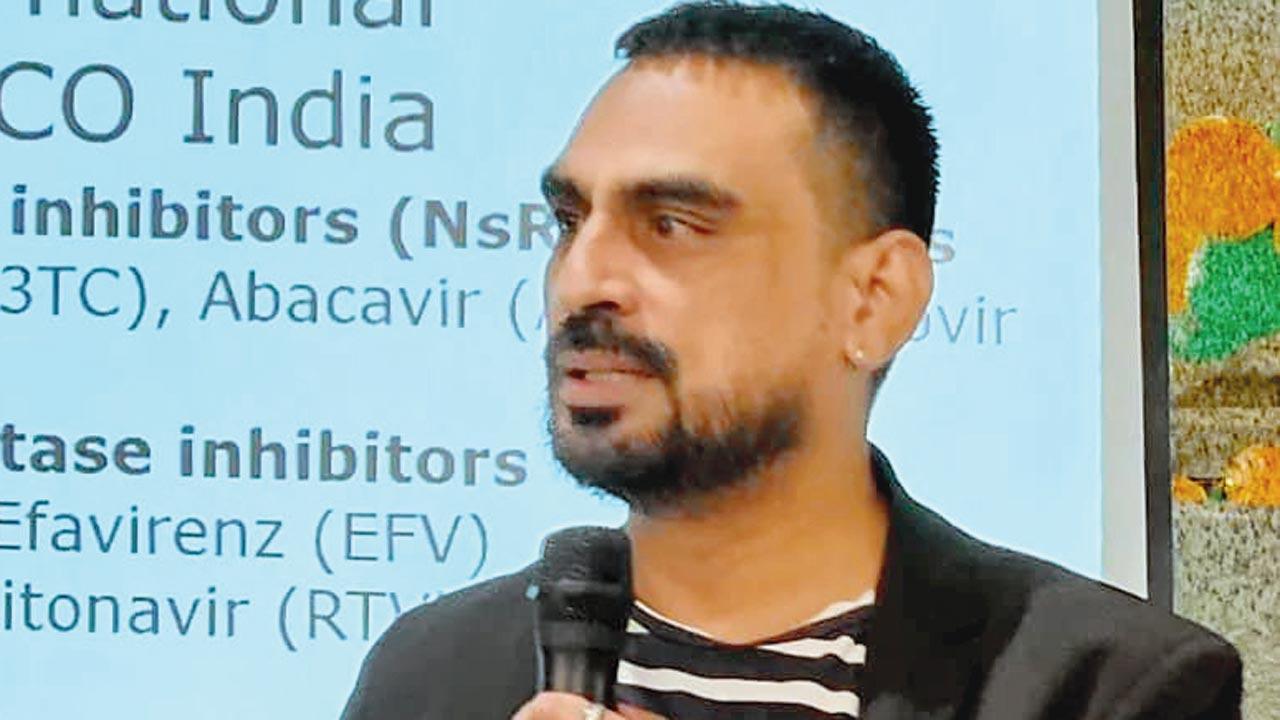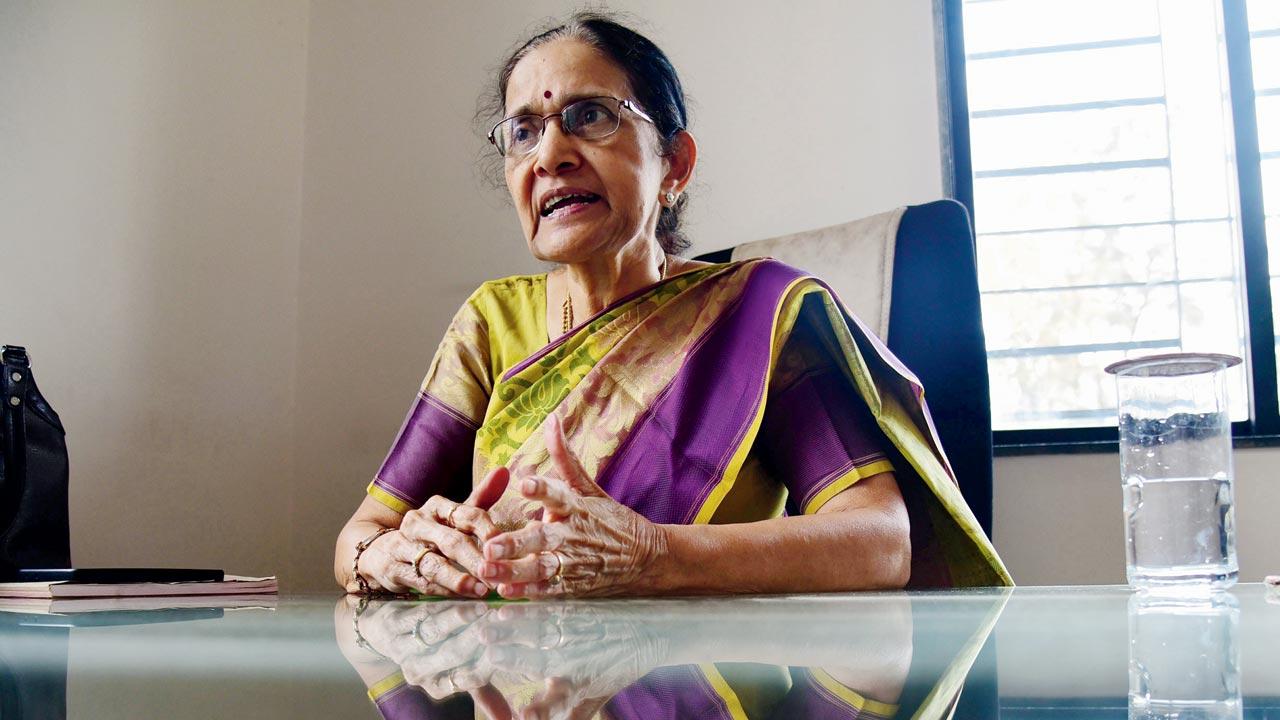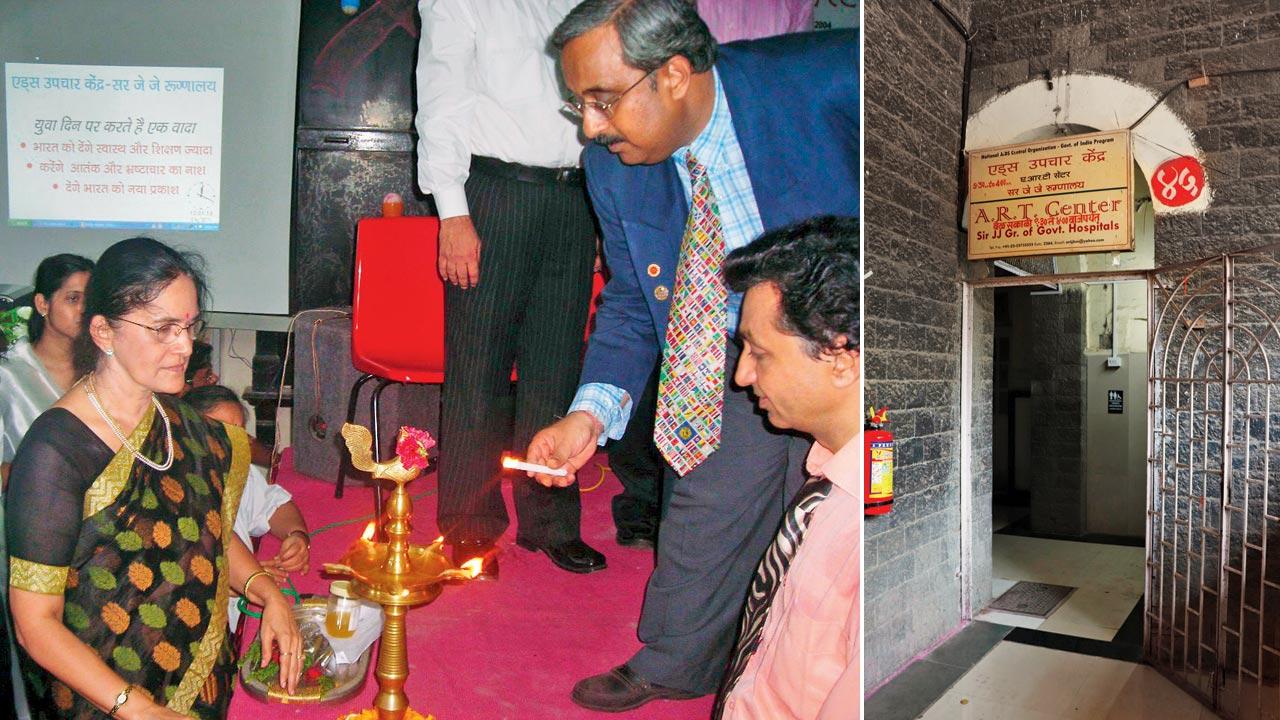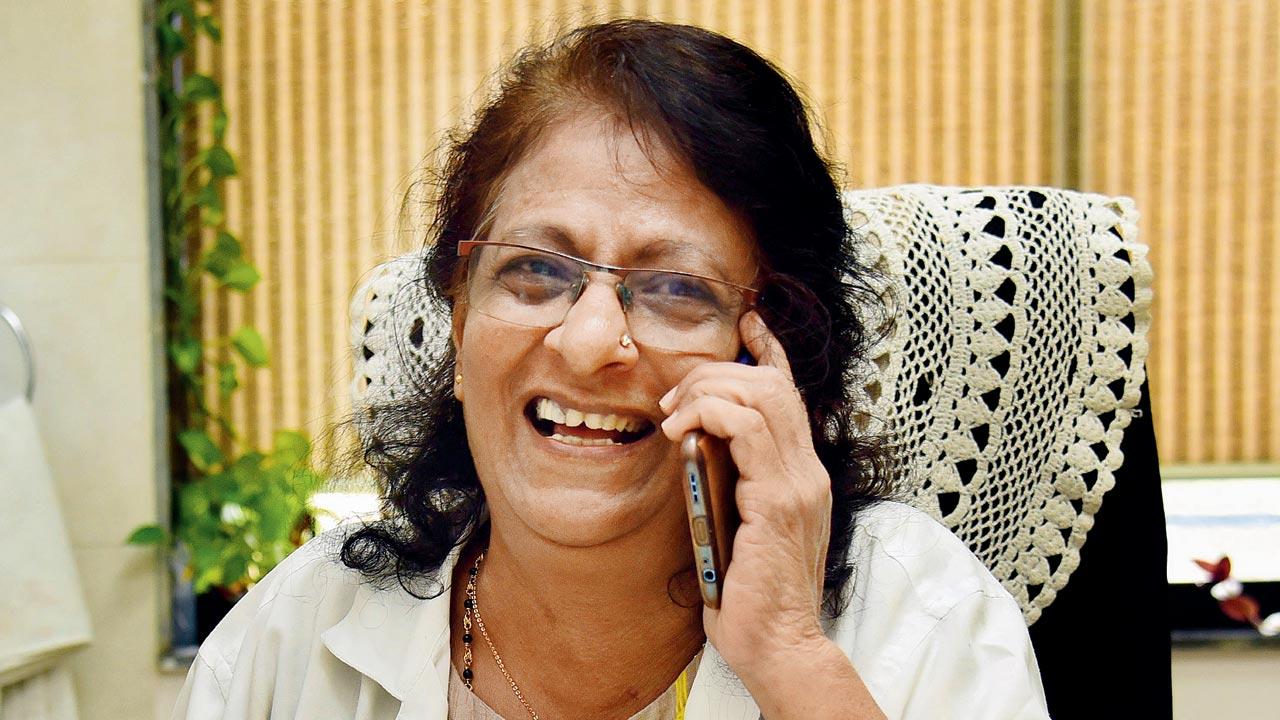mid-day takes a trip down memory lane with the state’s first-ever treatment centre for HIV—which completes 20 years this month—to see how far we have come when it comes to supporting those with the deadly virus

Ronald (name changed) was a teenager when he was diagnosed with HIV in 1991. He has since then quit alcohol and tobacco, earned a law degree and now helps over living with the deadly virus. Pic/Satej Shinde
By the time we finished research for this story, the one reason we felt proudest about being a ’90s kid was the sustained conversation we witnessed around the most dreaded condition of the decade—Human Immunodeficiency Virus (HIV) and the resulting Acquired ImmunoDeficiency Syndrome (AIDS).
ADVERTISEMENT
This writer has memories of Shabana Azmi’s awareness campaign on TV where she visits an AIDS ward, hugs a child, and turns to the camera to say, “Iss tarah pyaar faelta hai”, dispelling the belief that the disease spreads through touch. An even more vivid memory is a classmate summing up James Bond’s risqué lifestyle in one sentence: “He pukka has AIDS.” An 11-year-old boy’s cognisance of the disease’s connection with unprotected sexual intercourse and multiple partners is testimony to the effective awareness caused by tidal waves of campaigns.
At 76 years of age, Dr Alaka Deshpande is still as passionate about AIDS awareness and treatment as she was when she spearheaded the first Anti Retroviral Therapy (ART) Centre for AIDS at JJ Hospital in Byculla. The centre, set up in April 2004, was the first of its kind in the state to provide easy and affordable treatment of those diagnosed as HIV Positive. Many others have mushroomed since then.
 Ganesh Acharya
Ganesh Acharya
“The years leading up to the centre were filled with frenetic activity and so much learning,” Deshpande tells us. “We had little knowledge, no training and no guidelines. There were so many developments too, in terms of the condition as well as the treatment around it.”
It’s been 20 years, but every crucial milestone, development and its year sit sharp in her memory, and roll of her tongue when called. The first few documented cases of HIV, she tells us, were discovered in 1981 in California. As all the patients were gay men, it led to the misconception that it was a ‘homosexual disease’. Indians were complacent in the belief that “no gay men exist in our culture.”
By 1983, several women were diagnosed as HIV positive and the numbers were rising. In 1985, Dr John Jacob, then with the Christian Medical College in Vellore, procured some newly developed HIV testing kits from the US and examined commercial sex workers from Chennai. Two of them tested positive. And HIV became a “prostitute’s disease” (this was before politically correct trade terms were coined).
 Dr Alaka Deshpande, who has spearheaded HIV treatment efforts in the state, says the journey has been filled with learning. Pics/Nimesh Dave
Dr Alaka Deshpande, who has spearheaded HIV treatment efforts in the state, says the journey has been filled with learning. Pics/Nimesh Dave
In 1986, a patient with multiple disorders who died at Jaslok Hospital was diagnosed with HIV. Suddenly, the threat was real and right here.
“The Indian Council of Medical Research (ICMR) started ‘passive surveillance’ by testing the blood resting in blood banks,” says Deshpande, who was the HOD Medicine at JJ at the time. “Clusters of positive cases were found in Chennai as well as in Mumbai, and the attention was subsequently focused on these two cities. By 1990, as soon as a patient tested positive, doctors would refuse to touch them and refer them to a government hospital which, in Mumbai, meant JJ.”
This rush of patients necessitated the setting up of a separate OPD (outpatient department) for HIV patients in 1990, and the formation of the National AIDS Control Organisation (NACO) in 1991. However, all that the doctors could do was counsel patients on how the disease is communicated, diet and lifestyle changes to raise immunity, safe sex precautions, how to safeguard spouses, unborn children and infants, symptomatic medication, and cope emotionally.
 Dr Deshpande was HOD Medicine when the first ART Centre was launched at JJ Hospital in April 2004 , (right) The Centre still receives patients from all over Maharashtra but is aided by several more all over Maharashtra. Pic/Anurag Ahire
Dr Deshpande was HOD Medicine when the first ART Centre was launched at JJ Hospital in April 2004 , (right) The Centre still receives patients from all over Maharashtra but is aided by several more all over Maharashtra. Pic/Anurag Ahire
By 1995, over 25,000 patients were registered with JJ alone, but research too was advancing. Doctors across the world had established that drop in CD4 count—the number of DC4 cells in the body—to 200 was confirmation of AIDS. In healthy humans, CD4 cells range from 500 to 1500 in number. The ways in which the virus could be transmitted were also identified—unprotected sex with multiple partners, sharing of needles or blades, and through bodily fluids.
Awareness campaigns were also being designed. One of the initial ads featured a leading charismatic actor, who later also made it big in Hollywood, telling viewers that sharing towels does not spread HIV. Doctors were not impressed—firstly because they felt the focus should be on telling the people what leads to the spread of the virus over what doesn’t; and secondly, the actor was known for his endless string of romantic dalliances!
“The stigma was the worst,” says Ganesh Acharya, who was diagnosed in 1997 as a teenager and has since been a passionate activist. “The first reaction we’d get was, ‘You’re going to die’,” says the 43-year-old. “Nobody would want to touch us. Nobody would want to talk to us. Jobs were lost, lives were ruined.” Acharya, who still takes regular treatment at the ART, says the stigma is now “silent”. You may lose a job, but won’t know it’s because of the virus; people may not recoil from an outstretched hand but will avoid shaking it nonetheless.
 Dr Usha Udayawar, attached to the ART Centre in Andheri (East), also runs her own YouTube channel on HIV awareness, as she believes that every step counts
Dr Usha Udayawar, attached to the ART Centre in Andheri (East), also runs her own YouTube channel on HIV awareness, as she believes that every step counts
By the early 2000s, the virus, due to its molecular structure, was classified as a retrovirus and the treatment was called Anti Retroviral Therapy. Soon, HIV treatment commanded the lion’s share of JJ Hospital’s budget with its constant need for disposable medical implements and treatment of infections contracted by patients with low immunity. Finally, in 2004, the NACO decided to provide affordable ART to patients, and the first centre was set up at JJ in April that year, under Deshpande’s leadership.
We’ve surely come a long way,” says Dr Priya Patil, the current head of JJ’s ART. “People are more willing to be tested and treated; the mindset is changing. And it helps a lot that there are rules and guidelines to protect the identities of the patients; something that everyone takes utmost care to ensure,” she says. Dr Usha Udaywar, who is attached to the ART centre in Andheri, says that the scenario is still the same in some respects. “We live in the age of rave parties,” she says, “That means more shared needles and higher risks. We still get many cases from the younger generation, be it college students or working professionals.”
However, the treatment has become more easily available, affordable, as well as more streamlined. In the ’90s, when only one drug was available (to safeguard against secondary infections), ART centres now prescribe three drugs to be taken together or in various combinations. “The medication has to be taken for life to take care of what we call opportunistic infections—those that an HIV positive individual contracts due to low immunity, such as tuberculosis,” says Deshpande.
She adds that the last two decades have also opened her eyes to changing societal mindsets. The disease is no longer perceived as a consequence of a hedonistic (and by extension, immoral) lifestyle; there is recognition that the patient could be an innocent victim of a careless blood transfusion, or have inherited it.
“In the early 2000s, when we interviewed freshly diagnosed patients, we’d ask if they had visited commercial sex workers,” she says. “They would be outraged, and say they were married and had children. We’d then ask them if they did so eight or 10 years ago, and their reply would be, ‘Madam, woh toh normal hai.’ The stigma very much persists. Migrant workers take doses in bulk from city ARTs to take to their native places, as they don’t want to be seen in ART centres there.”
According to the 2023 edition of Sankalak, NACO’s annual publication, India is estimated to have around 24.67 lakh people living with HIV as of 2022, with an adult prevalence of 0.20 per cent. Sankalak’s data also states that India has the second largest HIV epidemic in the world, accounting for 6.3 per cent of all people worldwide.
For 59-year-old Ronald (name changed), living with HIV has brought hardship, lessons, and a deeper perspective on life. His life was hard from the start—marital discord between his parents drove him to alcoholism and although he was a skilled accountant, the addiction cost him over 25 jobs over 30 years.
“I also fell into the wrong company in my teenage years, around 1987, and had a wild life,” he admits. “I was diagnosed with HIV 2, a rarer form of the condition in April 1991. The ART centre’s intervention has given me a longer life, but HIV 2 also means more intense side effects. My bone density is decreasing, and I have an irritable bowel.”
Still, the feisty Thane resident has not given up. He has not touched alcohol for 19 years, tobacco for a year and earned a law degree after sustained attempts for three years. “I never married,” he shrugs. “Whatever time I have, I devote to spreading awareness about the condition and helping others.”
 Subscribe today by clicking the link and stay updated with the latest news!" Click here!
Subscribe today by clicking the link and stay updated with the latest news!" Click here!







